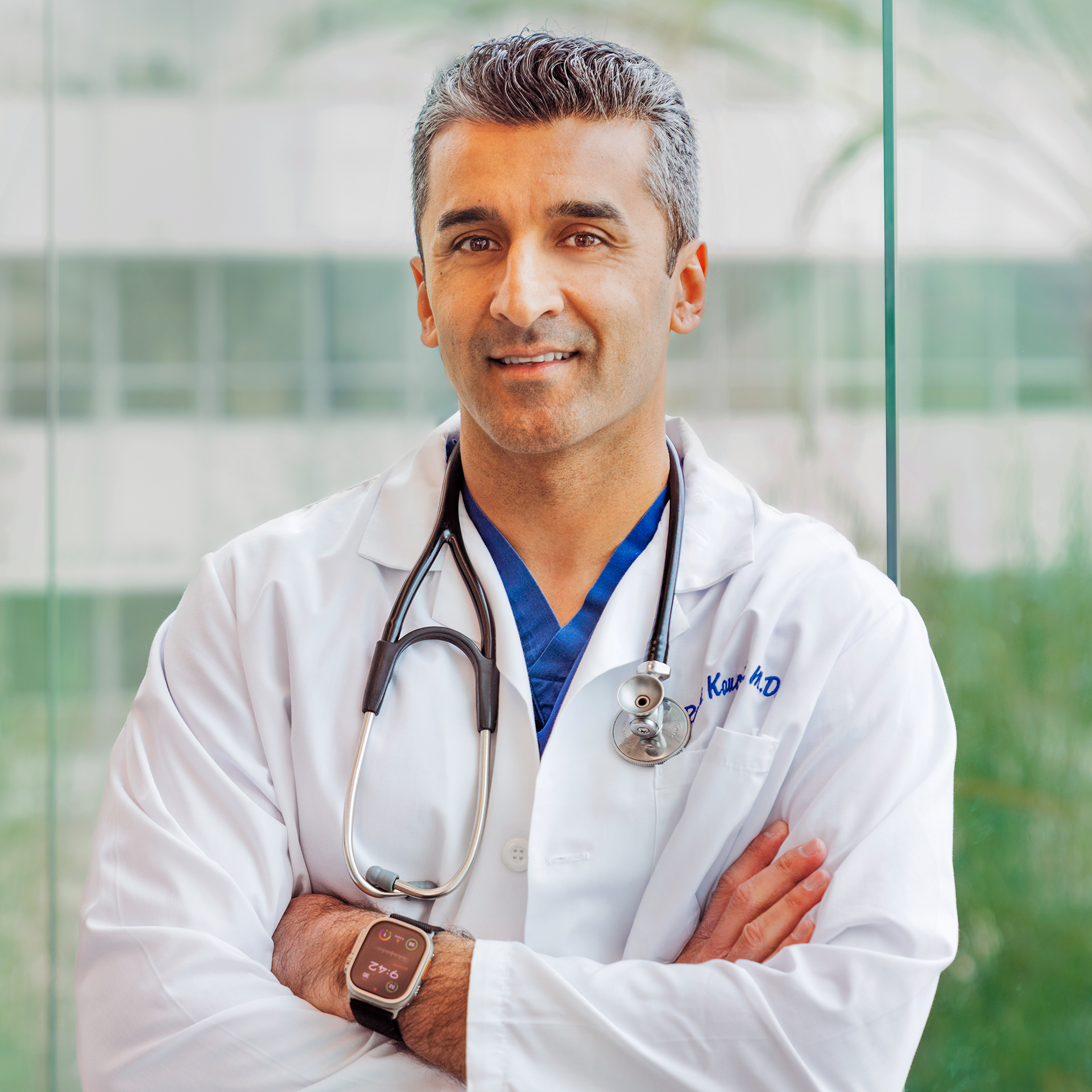Breathing Deeper
Suzi Gulcher got a new lease on life at Providence Little Company of Mary with a minimally invasive heart valve replacement that required almost no downtime.
- CategoryAdvertorials
- Written byAnne M. Russell
- Photographed byShane O’Donnell
It was only after her heart surgery that Suzi Gulcher realized how much her defective heart valve had been compromising her day-to-day activities. The 85-year-old Rancho Palos Verdes resident leads an active life—walking, gardening and volunteering extensively, including with Providence Little Company of Mary, where she has long served on the hospital’s board.

Suzi’s heart troubles began at age 3 when she got a strep infection, which became rheumatic fever and damaged the aortic valve in her heart. As an adult she always knew that the scarring of the valve, which lets oxygenated blood from the lungs return to the body via the aorta, could lead to problems and needed to be monitored. That’s why she sought the ongoing care of cardiologist Michele Del Vicario, MD, and subsequently that of his colleague, interventional cardiologist Rishi Kaushal, MD, at the Del Vicario Cardiovascular Center of Excellence at Providence Little Company of Mary.
When the aortic valve narrows—a condition known as aortic stenosis—and enough blood can’t get through, it causes symptoms like shortness of breath, chest pain and even fainting. The lower part of the heart may thicken as the left ventricle pumps harder to compensate for the impeded blood flow. Left untreated, the condition worsens and is eventually fatal.
But for many people, the symptoms are subtle and can be easily confused with normal aging. “I didn’t realize I wasn’t feeling good,” recalls Suzi. “I wasn’t able to breathe deeply. Now, after the surgery, I enjoy just taking that deep breath.”
***
The Time is Now
Dr. Kaushal had been monitoring Suzi’s heart condition for more than eight years, and in 2024 he told her, “Now is the time.”
The surgery to repair aortic stenosis involves replacing the damaged heart valve with a new one. Before 2005, a heart valve replacement required open-heart surgery and a lengthy and often painful recovery. However, with the Food and Drug Administration’s approval of the transcatheter aortic valve replacement (TAVR) technique, doctors had a new, much less invasive option for making the critical valve fix.
Dr. Kaushal remembers Suzi as a model patient. “She was ready to go as soon as we said it was time. She was optimistic but realistic as well. Suzi educated herself about the procedure, and she was a delight throughout the process,” he says.
In thinking back on her experience of February 2024, Suzi says, “The anticipation was the worst part.” As far as the actual procedure went, “It was virtually painless except for the incision. It took about an hour, and I remember being alert enough to ask for more anesthesia,” she says. Conventional surgery takes two to three hours.
***
Rapid Recovery
As in Suzi’s case, TAVR is usually performed with conscious sedation, aka twilight sleep, so the patient is awake and communicative when a catheter (a thin, flexible tube) is threaded into the heart to place a new valve over the diseased one. The patient’s recovery is rapid compared to conventional surgery, and the majority of TAVR patients go home the same day.
Suzi spent a single night in the hospital versus three to four for those who have general anesthesia and open-chest surgery. While TAVR patients are simply cautioned to avoid lifting more than 20 pounds for a couple of days afterward, conventional surgery patients must restrict their activities for at least a month.

“Suzi educated herself about the procedure, and she was a delight throughout the process.”
Above: Rishi Kaushal, MD
Who Gets Aortic Stenosis?
Aortic stenosis is the most common disease of the heart valve, affecting 200,000 people a year, according to the American Heart Association. You can have it for a long time before the symptoms become uncomfortable, which is why it’s a condition that’s mostly diagnosed after age 40.
Suzi’s experience with rheumatic fever as the trigger for her valve problem is rare; it’s much more often an age-related disease of wear and tear. As the heart pumps as much as 2,000 gallons of blood a day through the aortic valve, calcium can collect on it, impairing its function. All the usual risk factors for heart disease—being male, smoking, or having diabetes, high cholesterol or hypertension—can also contribute to developing aortic stenosis.
Dr. Kaushal worries that the disease is widely underdiagnosed and may be missed during routine doctor visits. If a primary care doctor does notice a heart murmur, that symptom warrants further diagnostics, he says, possibly including an ultrasound of the heart known as an echocardiogram.
“We’re trying to educate the medical community about early diagnosis,” he says. “We’re just not capturing all the cases at this point.” And that’s a problem, he notes, because “aortic stenosis is a progressive process. It’s going to get more severe over time.”
Suzi is relieved and grateful to be rid of her lifelong heart problem and is enjoying every day. She continues as a patient of Dr. Kaushal, saying, “He’s one of the world’s nicest people.”

•••
How TAVR Works
Transcatheter aortic valve replacement (TAVR) is a minimally invasive alternative to traditional open-heart surgery when a diseased, defective or damaged heart valve needs to be replaced. With surgical aortic valve replacement, the surgeon first opens the anesthetized patient’s chest and then opens the heart to place the valve. With TAVR, none of that is necessary.
Instead, TAVR begins with the operating physician making a small incision in the patient’s femoral artery in the groin, then threading a thin catheter into the patient’s beating heart to deliver a replacement valve contained in a stainless steel stent, which is carefully fitted over the diseased valve without removing it. Once the new valve is placed, it opens up so it can take over the job of regulating blood flow.
The patient stays conscious, although sedated, during the hour-long procedure, which also speeds recovery time since there’s no post-anesthesia awakening needed. Postsurgical pain is usually minimal, and most patients return home the next day.
Providence Little Company of Mary Medical Centers
San Pedro & Torrance | 844-510-HEAL (4325)
providence.org/southbay
IG: @providencehealthsystem FB: Providence Little Company of Mary (SouthBay)
There’s No Place Like Home
Treasures Interior Design’s Valerie Sartini talks Kate Hudson, dicey PTA meetings and relaxing with intention.
Empowering the Next Generation
As their own families expand, two local financial advisors offer comprehensive financial planning with holistic investment advice to multiple generations of clients.













